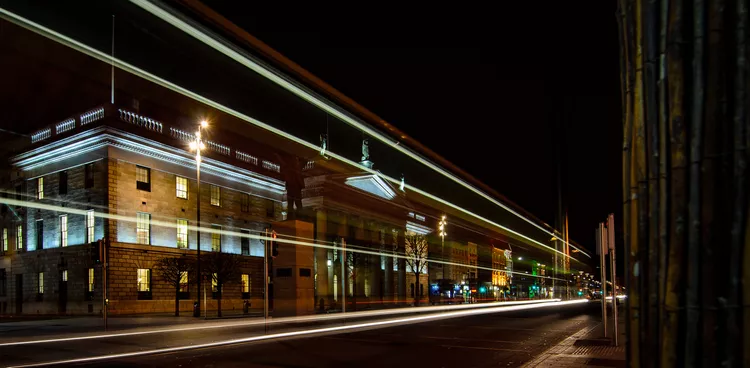1. Introduction
The Easter Rising of 1916 stands as a defining moment in Irish history. This article explores key Dublin attractions that vividly connect to this monumental event. The rebellion, although intended as a nationwide uprising, had its primary impact in Dublin, making the capital the perfect place to delve into the history of the Easter Rising.
Dublin Attractions Connected to the Irish Rebellion of 1916
The Easter Rising of 1916 was one of the most significant events in Irish history of the 20th century. If you’re interested in experiencing this pivotal moment, Dublin offers several key locations that encapsulate the spirit of the rebellion. From the origins of the Irish Volunteers to the dramatic stand of the rebels, each site narrates a part of this storied past. Notably, the grave of Roger Casement, a key figure arrested and executed, can also be found in this city.
General Post Office (GPO) and O’Connell Street

Patrick Pearse read the proclamation of the Irish Republic in front of the Dublin General Post Office. The rebels established the GPO, then located on Sackville Street, as their headquarters. This area still bears visible battle scars, and the street itself underwent extensive reconstruction post-artillery shelling. A new exhibition, GPO Witness History, opened in 2016, detailing the GPO’s role during the Easter Rising, making it a must-visit site.
National Museum of Ireland – Collins Barracks

The National Museum of Ireland, located in Collins Barracks, offers various exhibitions focused on the Easter Rising. The special exhibitions provide detailed insights into the background, key events of 1916, and the aftermath, presenting a balanced historical perspective through an array of original artifacts.
Parnell Square
Near the Rotunda Hospital, Parnell Square features a small monument with an Irish inscription. This monument symbolizes Ireland’s liberation, reminding passersby of the Irish Volunteers’ founding nearby. The Volunteers later became one of the largest factions in the 1916 uprising, alongside the Irish Citizens Army.
Magazine Fort, Phoenix Park
Overlooking the River Liffey, the (now disused) Magazine Fort was the site of the first confrontation of the Easter Rising. Volunteers feigned a game of football to approach the fort, but the magazine was locked, leaving them unprepared for the engagement.
Glasnevin Cemetery

Glasnevin Cemetery, Dublin’s largest burial site, contains numerous memorials dedicated to those involved in the 1916 Rising. The cemetery features a memorial designed by Dora Sigerson and the grave of Roger Casement, executed in London, as well as the resting places of notable figures such as journalist Francis Sheehy-Skeffington.
Saint Stephen’s Green and the Royal College of Surgeons

A rebel contingent led by Countess Markiewicz occupied Saint Stephen’s Green, a courageous yet ultimately fruitless act, as they faced heavy gunfire from British forces. The rebels took refuge in the Royal College of Surgeons, where the building remains marked by historic bullet holes.
Four Courts
At the Four Courts, located north of the Liffey, rebels stood resolute against superior British troops. The image of the injured Cathal Brugha resonated in Irish memory, famously singing “God Save Ireland” from the barricades before his later death in the Irish Civil War.
Kilmainham Gaol
This expansive prison, Kilmainham Gaol, served as the detention center for many rebellion leaders captured by British forces. It is notably the execution site for prominent figures including Patrick Pearse, making it a sacred place in Irish history.
Arbour Hill Prison Cemetery
At Arbour Hill Prison Cemetery, near the operational prison complex, lie the remains of many key figures behind the rebellion. Executed by British military, these individuals are commemorated in a site that tells their story, and it is conveniently located within walking distance of Collins Barracks.
Howth Lighthouse

While the Howth harbor did not play a central role during the Easter Rising, it was crucial for the event’s preparation. Erskine Childers brought arms from Germany on his yacht, Asgard, marking the “Howth Gun-Running,” which significantly bolstered the Irish Volunteers. Childers, a hero of independence, was later executed during the Civil War.





